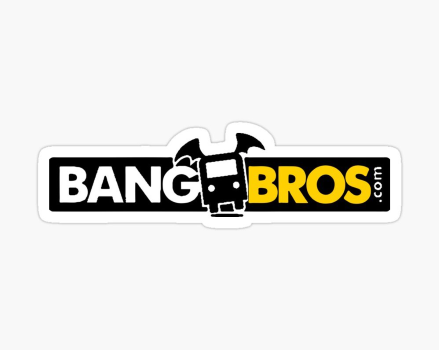From Traditional to Modern: Exploring the World of Asian Boy Toys Through Reviews
Although traditional boy toys such as action figures and toy cars have been popular for decades, the world of Asian boy toys is rapidly expanding. From intricate model kits to interactive robots, these modern toys offer a unique blend of tradition and technology that appeals to both children and collectors. Through reviews, we can explore this fascinating world and discover the latest trends in Asian boy toys.

Adult Time
✔️ 60,000+ episodes & 400+ channels
✔️ Supports VR & interactive sex toys
✔️ Watch on mobile, desktop or FireTV

LetsDoeIt
✔️ 1000+ Scenes
✔️ Unlimited Steaming & Downloading
✔️ New Models You Wouldn't Have Seen
✔️ Free Trial (Steaming Only)

Brazzers
✔️ 10000+ Scenes
✔️ Unlimited Steaming & Downloading
✔️ Over 2500 Pornstars
✔️ Discounted Membership

Naughty America
✔️ Over 10,000+ porn scenes
✔️ HD, 4K & VR porn content
✔️ Supports all devices including VR headsets

Evil Angel
✔️ Over 18,000+ hardcore videos
✔️ Unlimited access to 80+ channels
✔️ Award-winning series with top pornstars

MamaCitaz
✔️ 800+ Scenes
✔️ Unlimited Steaming & Downloading
✔️ Exclusive Latina Models
✔️ Free Trial For Two Days
The Traditional World of Asian Boy Toys
Origins of Traditional Asian Boy Toys
The roots of traditional Asian boy toys can be traced back centuries ago. In countries like Japan, China, and Korea, wooden dolls were commonly used as playthings for young boys. These dolls were often carved by skilled craftsmen and had movable arms and legs. They were usually dressed in traditional clothing such as kimonos or hanboks and represented iconic characters from folktales or historical figures.
The Significance of Traditional Asian Boy Toys
Traditional Asian boy toys hold great cultural significance in their respective countries. In Japan, dolls called Kokeshi are believed to bring good luck and prosperity to children who own them. Similarly, Chinese Budaixi puppets are considered symbols of bravery and heroism. These toys not only serve as sources of entertainment but also impart valuable lessons about history, culture, and tradition.
A Look at Popular Traditional Asian Boy Toys
One popular traditional toy is the Japanese Daruma doll. This red-colored figure with its one eye painted black is based on Bodhidharma – a legendary Buddhist monk who founded Zen Buddhism. Before making a purchase, readers may want to consider reading some Ladyboy Goo discount reviews to see what others have to say about this product. The doll is believed to bring good luck and success in achieving goals when its eye is filled in after setting a new goal.
Another noteworthy toy is the Korean Taekwondo wooden warrior. This hand-carved figure of a martial arts fighter pays tribute to the ancient art of Taekwondo and is often used as a decorative item in Korean households.
The Modernization of Asian Boy Toys
The Emergence of Action Figures
In the 20th century, traditional Asian boy toys began to evolve into modern forms with the rise of action figures. Inspired by popular comic book characters, these toys had more realistic features and accessories. In Japan, companies like Bandai and Takara Tomy introduced iconic characters from popular anime series such as Dragon Ball Z and Naruto in the form of action figures. These toys gained immense popularity not only among children but also among teenagers and adults. Although taboo chat rooms may seem risque and forbidden, they offer a safe space for individuals to explore their deepest desires with like-minded individuals. Taboo chat can be a liberating and exciting way to connect with others who share similar interests.
Impact on Pop Culture
With the growing demand for action figures, Asian boy toys became an integral part of pop culture. Characters like Pikachu from Pokemon and Ultraman from Ultraman have become household names worldwide, thanks to their merchandise being sold globally.
Moreover, with the emergence of social media platforms like Instagram and YouTube, collectors started showcasing their collections online, giving rise to an entire community dedicated to discussing and reviewing Asian boy toys.
Innovative Technology in Modern Asian Boy Toys
As technology advanced, toy companies started incorporating it into their products. Japanese company Good Smile Company revolutionized the world of Asian boy toys with its line of Nendoroid figures. These small-scale figurines have interchangeable parts that allow them to be posed in various ways. Moreover, they come with additional accessories such as facial expressions and props that can be changed out to create different scenes.
Another example is South Korean company Banpresto’s line-up of Statuesque Ultra Instinct Goku figures which use hologram technology to create stunning visual effects like energy blasts around the character.
Exploring the World of Asian Boy Toys Through Reviews
Introduction to Toy Reviewers
Toy reviewing is a popular trend among Asian boy toy enthusiasts, where they share their thoughts and opinions on new releases or their personal collections. These reviewers often have a significant influence on the buying decisions of consumers, especially when it comes to limited edition or exclusive items. During my research for this Gloryhole Swallow review, I was impressed by the diverse range of positive feedback and opinions from satisfied customers.
The Importance of Unboxing Videos in Toy Reviews
Unboxing videos are an essential aspect of toy reviews as they give viewers a first-hand look at the packaging and contents of the product. Japanese toy reviewer Shokugan is known for his detailed unboxing videos that showcase every aspect of the figure, including articulation, accessories, and overall quality.
Many toy companies collaborate with popular reviewers to create special edition versions of their products. For instance, Banpresto teamed up with YouTube star Kakarot 1975 to release a limited edition version of their Super Saiyan Blue Goku figure with added bonus accessories.
Honest Opinions and Criticisms in Toy Reviews
One of the advantages of reading or watching toy reviews is getting honest opinions and criticisms about a product. Many reviewers provide constructive feedback on areas such as design flaws, paint job discrepancies, or pricing issues. This not only helps consumers make informed purchasing decisions but also allows toy companies to improve future releases based on customer feedback.
However, some reviewers have faced backlash from fans for giving negative reviews or pointing out flaws in highly anticipated toys. This raises concerns about how much influence these reviews have on consumer behavior and if it can potentially harm sales for certain companies.
The Impact of Social Media on Asian Boy Toy Reviews
YouTube and Instagram Influencers
The rise of social media has given birth to a new generation of toy reviewers – influencers. These individuals have a significant number of followers on platforms like YouTube and Instagram, and their opinions hold great weight among fans and collectors.
For instance, Singaporean YouTuber JobbytheHong has over 1 million subscribers who tune in to watch his reviews of various Asian boy toys. His comedic style and honest critiques have made him a fan favorite in the community.
Similarly, South Korean Instagram influencer Korean_Figure_Collector has over 300k followers who turn to her for updates on new releases and reviews of popular Asian boy toys.
Influencer Marketing
Toy companies have also recognized the influence of social media influencers and often collaborate with them to promote their products. This type of marketing allows companies to reach a wider audience through the influencer’s platform while also benefiting from their credibility and expertise in the field.
One notable collaboration was between Japanese company Kotobukiya and SuperOhura, a Taiwanese toy reviewer, for their line-up of Marvel superhero figures. The reviewer provided detailed unboxing videos, showcasing the quality and appeal of the products, which led to an increase in sales for Kotobukiya.
The Verdict
Through traditional wooden dolls to modern action figures, Asian boy toys have come a long way in terms of design, technology, and significance. Over the years, they have not only served as sources of entertainment but also provided valuable insights into different cultures. With the advent of social media and influencer culture, these toys continue to capture hearts worldwide through reviews shared by passionate collectors and enthusiasts. As we look towards the future, it will be interesting to see how these toys evolve further and continue to impact pop culture across the globe.
What are Some Popular Asian Boy Toys Currently on the Market?
Some popular Asian boy toys currently on the market include Beyblade Burst, Gundam model kits, Tamagotchi virtual pets, and Kamen Rider action figures. These toys are inspired by popular Japanese animation and offer interactive play experiences for young boys. Other popular options include Pokemon trading cards and Dragon Ball Z action figures, both of which have a large following among Asian boys.
How Do These Toys Differ From Western Or American Boy Toys?
Asian boy toys often feature characters and themes that are popular in Asian culture, such as anime or martial arts. They also tend to have more intricate designs and details, with a focus on craftsmanship and quality. Many Asian boy toys incorporate elements of technology and interactive features, appealing to the tech-savvy generation. These differences give Asian boy toys a unique and diverse appeal compared to Western or American boy toys.
Are There Any Cultural Influences in the Design and Production of These Asian Boy Toys?
Yes, there are cultural influences in the design and production of Asian boy toys. Many of these toys are inspired by popular anime or manga characters, reflecting the strong influence of Japanese culture. Traditional themes such as martial arts and samurai warriors can also be seen in the designs. Manufacturers often incorporate elements from various East Asian cultures, making these toys a representation of diverse cultural influences.



